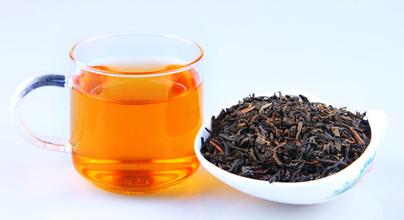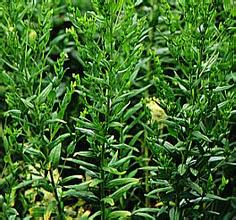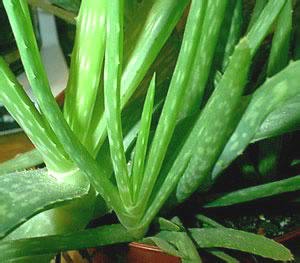Burns can occur due to many reasons and one of the commonest is the steam burns. These types of burns are common place in the kitchen and often would be mild in nature with an uneventful recovery. But, given the fact that, the steam being not only hot but is present in an aerosol form would make it more dangerous, especially in instances of inhalation.
First Aid for Steam Burns
The outcome of a steam burn is usually a first degree burn with reddened skin but it is possible for a person to develop a third degree burn with whitening of the area and formation of blisters. If the steam is inhaled, the airways can get damaged and the patient may develop compromised breathing that can be fatal in the end. Thus, the first aid givers should focus their attention on saving the life of the victim at the same time paying attention to reducing the scar formation and the deformity along with long term disability.
- 1. If you encounter a person who suffered a burn caused by steam they should be calmed down as much as possible as the panicking nature can lead to non compliance with the treatment and drastic measures which can do more harm than good. Thus, they should be spoken to and the extent of the burn should be assessed methodically.
- 2. If the patient finds it difficult to breath, the airways should be secured and in the instance of respiratory failure, they needs to be given rescue breaths till such times the emergency teams are able to take over.
- 3. If the breathing is not compromised, attention can be given to the wound itself and it is important to resist the urge to cool the burn with flowing water as this can make the patient go in to a shock state if the burn is severe enough. At the same time, the friction caused by the flowing water can also damage the burned tissues on the surface of the wound.
- 4. Application of ointments to the area is also controversial in its usefulness for a moderate to severe burn wound and the better thing would be to cover the burn surface with a clean piece of gauze which is attached loosely to the area. The purpose would be to allow the oxygen to freely circulate on the surface of the wound as well as to avoid being contaminated with dusts and insects.
- 5. In case there are clothing fixed to the burned surface, it is necessary not to remove such cloths as it will be rather painful and be damaging. The task can be done by the emergency teams and in an emergency unit. At the same time, the burned area should be placed above the heart level if it is possible and in case the fingers are burned, each finger should be separated by a clean piece of gauze placed in between.
- 6. A more superficial burn can be treated with a cooling lotion and an antibiotic ointment. But, the most important thing in such burns as with any other burn wound be the necessity to keep it clean.
Home Remedies for Steam Burn
First we should understand the three types of burns. The type and size determines if you should treat at home or visit your Emergency room doctor.
| Types | Description | Symptoms | Examples |
| 1st Degree Burns | Involve only the outer layer of the skin called the epidermis. | redness and pain but no blisters | from sunburn, scalding |
| 2nd Degree Burns | Involve the epidermis and the dermis where the blood vessels are thus with damage to the vessels fluid leaks out forming blisters. | blisters, Oozing and pain | from oven coils, severe sunburns |
| 3rd Degree Burns | Involve the entire skin layers, appendages (hair, sweat glands) fat and sometimes muscle and bone. | skin is charred/black, white or cream colored and no pain since nerves are destroyed | from chemicals, fires, electricity |
It is recommenced that only small 1st and 2nd degree burns be treated at home. All 3rd degree burns should be seen by a doctor. If larger than a dollar coin especially infants and elderly, should consider seeing a doctor.
How to Treat the Steam Burn?
1. Cool it /milk it
Immediately when it occurs plunge in cold tap water do not place ice since this can cause frost bite like burns. Then reach for milk and soak in this or soak wash cloth with milk and place on burns. Remember to rinse off milk since can be smelly if left on. As liquid warms remove and add cool set.
This helps to stop the toasting of cells which continues for some mins. after and also is a temporary pain killer.

- Black tea; add 3-4 bags to water; the tannic acid from tea reduces pain or wet 3 bags and make a poultice if on the run. (Preferably to use warm water to steep tea then add cold water).
- Epsom salts; add to water and then place wound in water.
- Beat Egg Whites and coat affected area repeating when dries out until pain stops, this is a great pain reliever, prevents swelling and scars. Egg whites can be used alone if nothing else is available.
2. Pain relief
Take Ibuprofen/ Acetaminophen as directed appropriate for age group, while in cooling fluid (above). Keep wound soaked in cool liquid until pain is gone.
3. Dress it
When pain is bearable take out of fluids:
- Apply burn ointment/ Preparation H cream or gel- cream contains a local anesthetic cream (pain relief), gel contains witch hazel which helps with swelling and pain. Both gel and cream will help with pain. The burn ointment has local anesthetic also and helps with swelling too. You can apply directly or on gauze then cover burn.
- Honey can also be used; place a dollop on gauze, then place on wound this pulls the fluid to help prevent blisters or apply directly.
- Mustard is a good dressing too for burns.
- Toothpaste may be applied to 1st degree burns only but I would advise only if nothing else is available.
Herbal remedies to dress it with:

- Witch Hazel, make infusion, wet clean cloth and cover wound. Reapply when dry.
- Elder flowers /comfrey leaves, crush leaves or flowers and apply as poultice
- St.John’s wort oil, apply helps reduce inflammatory process
- Lavender oil helps with inflammation also.
Note preferable to leave open to heal since leaving on bandages can cause sweating and sticking.
4. Elevate it
Keep affected area above heart level if possible. This helps with swelling.
5. Accelerate healing

- Aloe Vera is recommended about the 2nd day. Apply the gel from the thick leaves directly or on bandage this speeds healing and reduces scarring.
- Vitamins C, A, E and mineral Zinc are great to promote healing of the skin and can be acquired from eating lots of e.g.. citrus, broccoli, bell peppers, oysters.
6. Clean it
- Keep the wound clean and dry.
- Wash gently with Soap and Water or Hydrogen Peroxide diluted in water or Vinegar mixed half and half with water.
- Preferably to leave open or nonstick bandage is best so that bandages will not get stuck to wound and irritate with each attempt to change.
- Antibiotic ointment may be used if there are signs of infection but most herbal remedies are also antibacterials.
Tips:
How to Help Burns on Tongue:
- Place a packet of sugar or teaspoon of fine sugar on tongue and leave until dissolves.
- Rinse mouth with salt water (1/2 tsp. in 8ozs. water) hourly. Salt helps to heal mucosa and gums quickly.
How to Prevent Burns:
- Prevention is the best cure. So try your utmost to have a safe environment for children especially.
- Keep out of kitchen especially when cooking /baking.
- Turn pot handles in.
- Use back burners as much as possible.
- Be vigilant with hot foods and place far away from edges as possible.
- Use thick pot holders and mittens.

